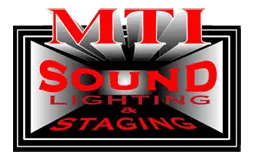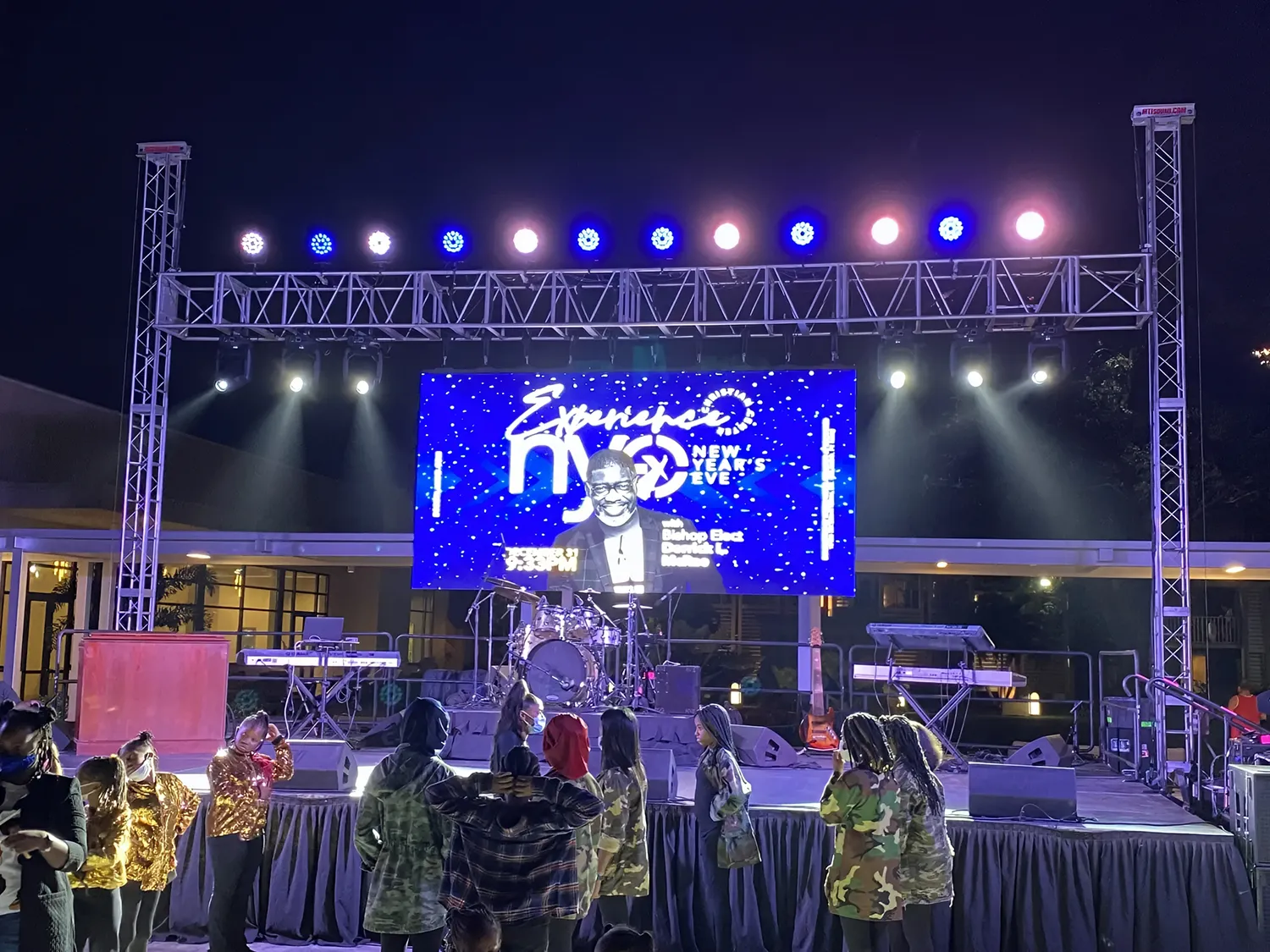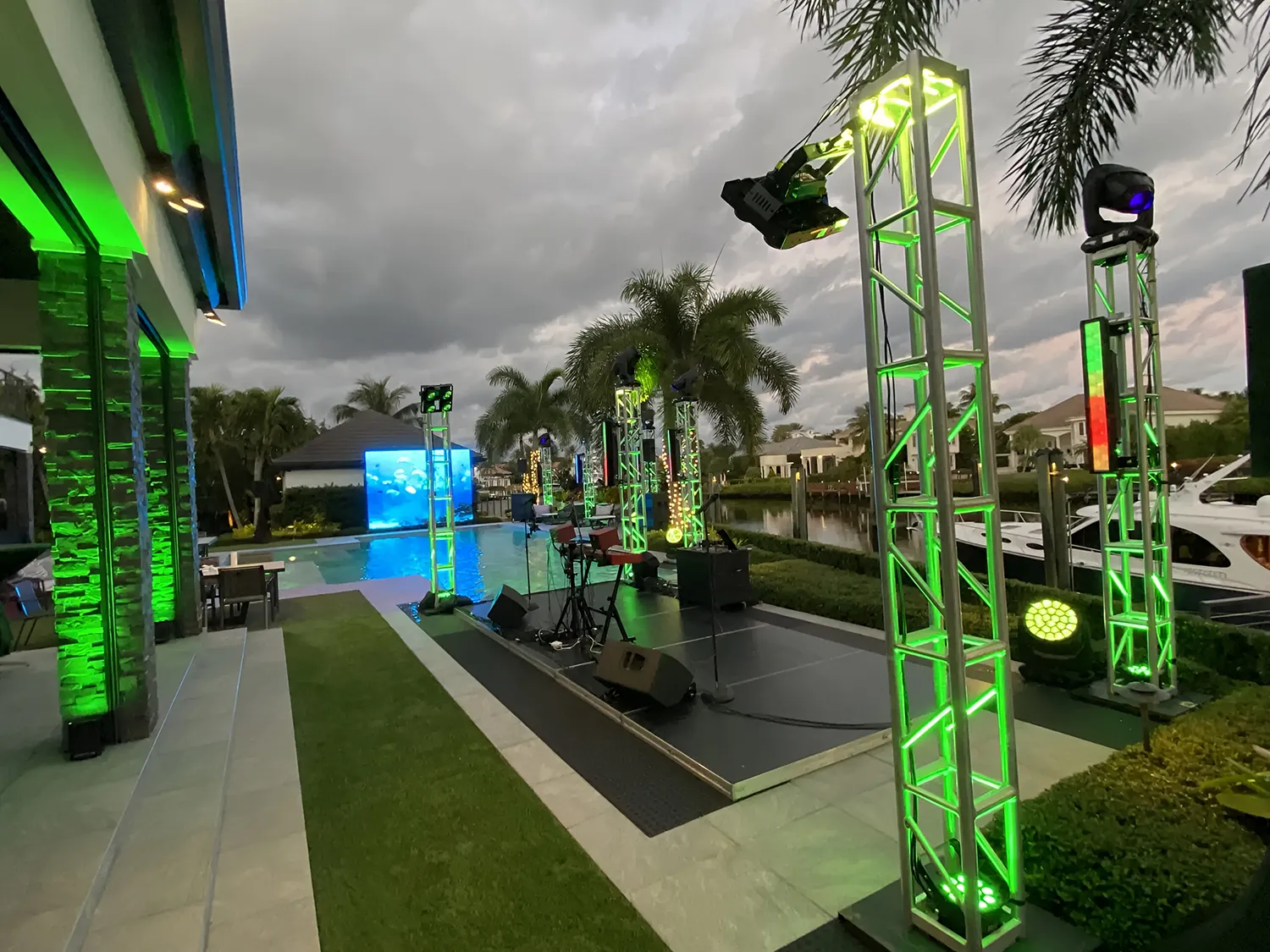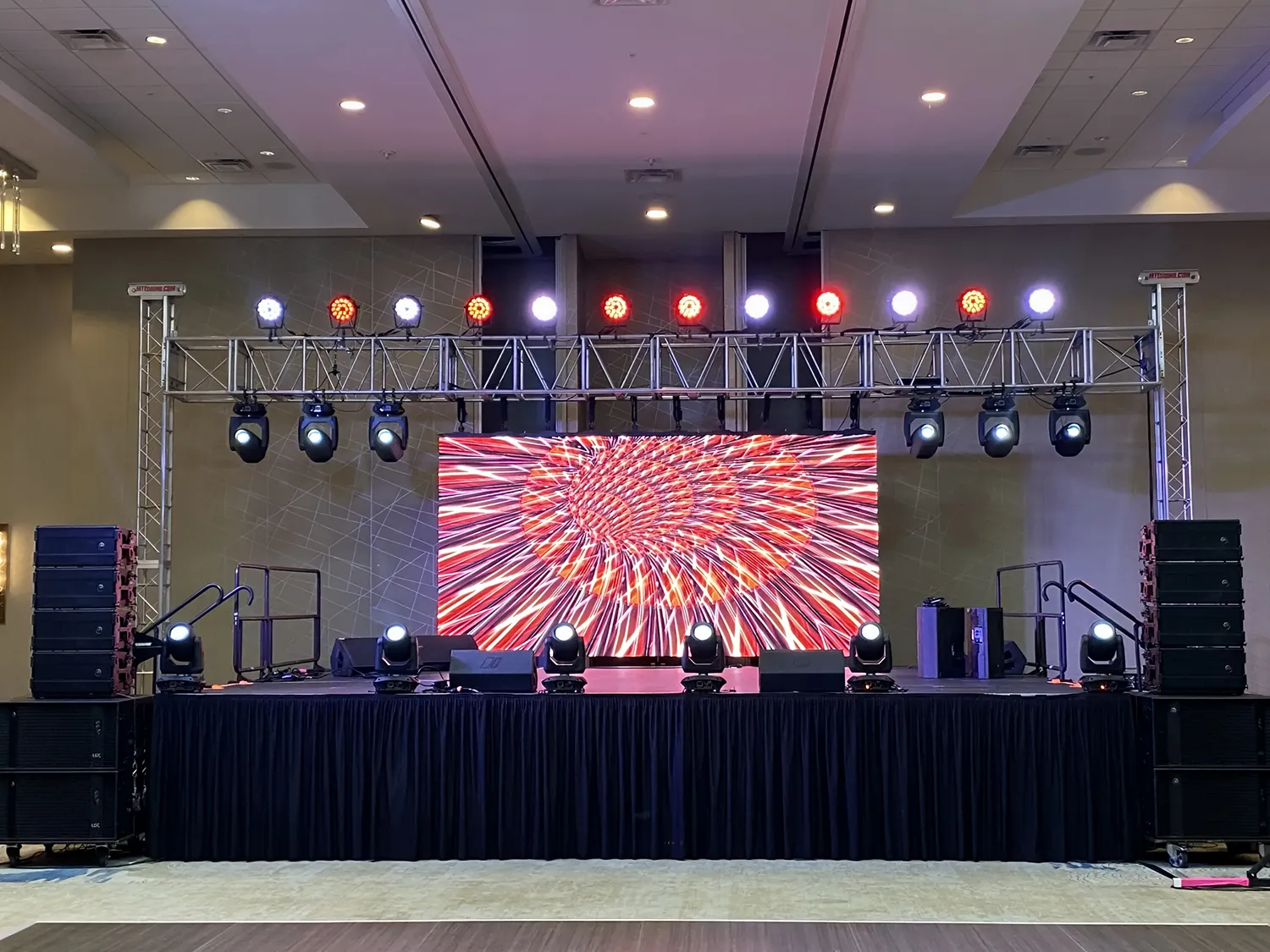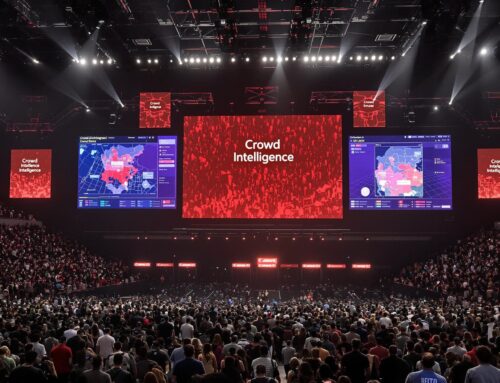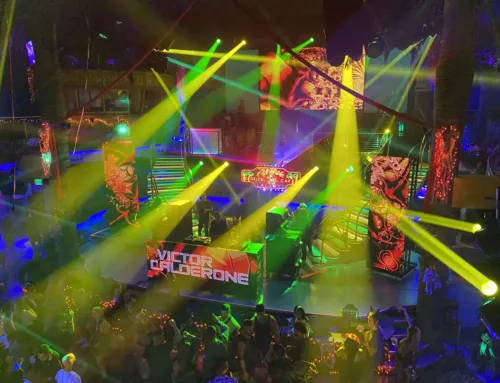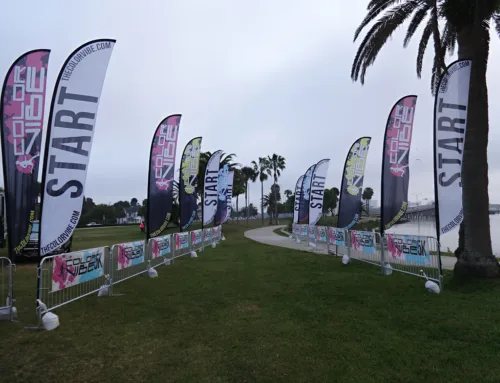Stage lighting can make or break the energy of any event. Picture this. A single LED fixture can cut power consumption by up to 75 percent compared to old-school stage lights. That sounds like an easy win for your budget and the planet, right? The real surprise is that picking the right lighting is less about fancy equipment and more about turning a blank space into a show-stopping moment. Ready to rethink how you light up your next event?
Table of Contents
- Planning Stage Lighting For Your Event
- Choosing The Right Lighting Equipment
- Positioning And Controlling Stage Lights
- Stage Lighting Tips For Different Venues
Quick Summary
| Takeaway | Explanation |
|---|---|
| Understand Your Event’s Lighting Needs | Conduct a comprehensive assessment of your venue’s dimensions, existing infrastructure, and event goals to ensure effective lighting design tailored to each event type. |
| Choose the Right Lighting Equipment | Select lighting fixtures based on their specific functions, considering factors such as brightness, color rendering, and energy efficiency to achieve the desired visual impact. |
| Utilize Professional Support for Technical Coordination | Collaborate with experienced lighting technicians who can manage complex setups, ensure seamless transitions, and address technical challenges during the event. |
| Implement Strategic Light Placement | Position fixtures thoughtfully using techniques like front, side, and backlighting to enhance mood and focus audience attention appropriately. |
| Adapt Lighting Techniques for Different Venues | Modify lighting strategies to accommodate the unique challenges and requirements of various venues, ensuring immersive experiences tailored to the audience and event type. |
Planning Stage Lighting for Your Event
Successful stage lighting requires strategic planning that transforms an ordinary event into an extraordinary experience. Professional event lighting goes far beyond simply illuminating a space – it creates atmosphere, directs audience attention, and communicates emotional nuance through carefully designed visual design.
Understanding Your Event’s Lighting Requirements
Before selecting any equipment, you must thoroughly assess your specific event needs. Different events demand unique lighting approaches. A corporate conference requires dramatically different illumination compared to a live music performance or wedding reception. Explore our comprehensive event lighting solutions to understand the versatility needed for various scenarios.
The first critical step involves conducting a comprehensive venue assessment. Professional lighting designers recommend analyzing several key factors:
- Space Dimensions: Measure ceiling height, stage area, and potential mounting positions for lighting fixtures
- Existing Infrastructure: Evaluate existing electrical capabilities and rigging points
- Event Purpose: Determine the emotional and visual goals of your specific event
According to Eventbrite’s Technical Production Guide, understanding your venue’s physical characteristics is crucial for creating an effective lighting design. Precise measurements and infrastructure evaluation prevent last minute technical complications.
Selecting Appropriate Lighting Equipment
Choosing the right lighting equipment requires balancing technical specifications with creative vision. Professional event lighting involves multiple fixture types, each serving a specific purpose. Par cans provide broad wash lighting, while moving head fixtures allow dynamic color and position changes. LED technology has revolutionized stage lighting, offering energy efficiency and remarkable color versatility.
Key considerations when selecting lighting equipment include:
- Fixture brightness and beam angle
- Color rendering capabilities
- Power consumption and heat generation
- Mounting and control flexibility
Professional lighting designers recommend creating a lighting plot that maps out exact fixture placement and programming. This technical blueprint ensures smooth execution and prevents potential technical issues during the event.
Technical Coordination and Professional Support
While understanding lighting principles is essential, complex events often require professional technical coordination. Experienced lighting technicians bring specialized knowledge in equipment selection, programming, and real time adjustments. They understand how to create seamless transitions, manage unexpected challenges, and maintain consistent visual quality throughout an event.
Collaborating with experienced professionals ensures your lighting design achieves its maximum potential. Their expertise transforms technical equipment into a powerful storytelling medium, guiding audience perception and enhancing overall event experience.
By approaching stage lighting as a strategic design process rather than a mere technical requirement, event organizers can create memorable, immersive environments that captivate and inspire their audiences.
Choosing the Right Lighting Equipment
Selecting the appropriate lighting equipment is a critical decision that can dramatically impact the success and visual quality of your event. Professional lighting requires understanding the nuanced capabilities of different fixtures, technologies, and their specific applications across various event types.
Types of Stage Lighting Fixtures
Modern stage lighting encompasses a diverse range of fixture types, each designed to serve specific visual and technical purposes. Professional lighting designers recognize that no single fixture can meet all event requirements. Learn more about our professional lighting equipment options to understand the complexity of lighting design.
Key fixture categories include:
- Par Cans: Provide broad, uniform wash lighting ideal for general stage illumination
- Moving Head Fixtures: Offer dynamic color and position changes for complex lighting sequences
- LED Panels: Deliver energy efficient, color changing capabilities with minimal heat generation
- Spotlights: Enable precise, focused illumination for specific performers or areas
According to Live Sound International, the selection process requires careful consideration of fixture specifications, venue characteristics, and event objectives.
Here’s a table summarizing the key types of stage lighting fixtures, their main purpose, and special features discussed in this section:
| Fixture Type | Main Purpose | Notable Features |
|---|---|---|
| Par Cans | General stage wash | Broad, uniform illumination |
| Moving Head Fixtures | Dynamic color & position changes | Programmable, movable, versatile |
| LED Panels | Energy-efficient, color changing capabilities | Low heat, many color options, efficient |
| Spotlights | Focused illumination on performers/areas | Precise, highlights focal points |
Technological Considerations
Advanced lighting technology has transformed stage design, introducing unprecedented flexibility and creative potential. LED technology represents a significant breakthrough, offering substantial advantages over traditional lighting systems. Modern LED fixtures consume less power, generate minimal heat, and provide remarkable color range and programming capabilities.
Key technological factors to evaluate include:
- Color temperature range
- Beam angle and spread
- Power consumption
- Control interface compatibility
- Durability and maintenance requirements
Professional lighting designers recommend selecting fixtures that offer both technical reliability and creative versatility. Research from Entertainment Technology Magazine indicates that integrated control systems now allow unprecedented precision in lighting design.
Budget and Performance Balance
Balancing technical performance with budget constraints represents a critical challenge for event organizers. High end lighting equipment can significantly enhance visual experience but also represents a substantial investment. Professional lighting designers recommend a strategic approach that prioritizes essential capabilities while maintaining financial practicality.
Considerations for budget conscious lighting design include:
- Rental versus purchase options
- Modular equipment that offers expandability
- Multi purpose fixtures with diverse functionality
- Long term maintenance and operational costs
By carefully evaluating equipment capabilities, technological features, and budget implications, event organizers can create stunning visual experiences that captivate audiences while maintaining financial responsibility. The key lies in understanding that lighting is not merely a technical requirement but a powerful storytelling medium that shapes audience perception and emotional engagement.
Positioning and Controlling Stage Lights
Positioning and controlling stage lights represents the sophisticated art of transforming technical equipment into a powerful visual narrative. Professional lighting design goes beyond simply illuminating a space – it strategically creates mood, directs audience attention, and enhances the emotional impact of an event.
Strategic Light Placement Techniques
Effective stage lighting requires precise fixture positioning that considers multiple technical and artistic factors. Professional lighting designers employ complex spatial strategies to maximize visual impact. Discover our comprehensive approach to lighting and staging integration to understand the nuanced techniques used by experts.
Key positioning principles include:
- Front Lighting: Provides primary illumination and visibility
- Side Lighting: Creates depth and dimensional definition
- Backlighting: Separates performers from background, adds visual dimension
- Accent Lighting: Highlights specific areas or performers
According to Lighting&Sound International, successful light placement requires understanding geometric relationships between fixtures, performers, and audience perspectives.
The following table summarizes common stage light placements and their purposes, helping you quickly understand how each technique enhances your event:
| Light Placement Type | Main Function | Visual Impact |
|---|---|---|
| Front Lighting | Primary illumination, enhances visibility | Brightens faces and main subjects |
| Side Lighting | Adds depth and dimensionality | Sculpts performers, adds contrast |
| Backlighting | Creates separation from background | Visual depth, dramatic outlines |
| Accent Lighting | Highlights specific areas or performers | Draws focus, adds visual highlights |
Advanced Lighting Control Systems
Modern lighting control technology has revolutionized stage design, offering unprecedented precision and creative flexibility. Digital control systems allow lighting designers to program complex sequences, create instantaneous color transitions, and synchronize lighting with audio and visual elements.
Critical control system capabilities include:
- Programmable color mixing
- Real time intensity adjustments
- Synchronized movement sequences
- Network based remote control
- Automated scene transitions
Professional Lighting Magazine reports that contemporary control platforms enable lighting designers to craft intricate visual experiences with millisecond precision.
Adapting Lighting for Different Event Types
No single lighting approach works universally. Each event type demands a unique lighting strategy that considers specific performance requirements, venue characteristics, and audience expectations. Corporate conferences require different illumination techniques compared to musical performances or theatrical productions.
Event specific lighting considerations include:
- Audience sightlines
- Performance area dynamics
- Technical equipment limitations
- Emotional storytelling objectives
- Budget constraints
Successful lighting design transcends technical execution. It represents a sophisticated blend of technical expertise, artistic vision, and strategic planning. By understanding the complex relationship between light positioning, control technologies, and event objectives, professionals can create immersive visual experiences that captivate and inspire audiences.
Stage Lighting Tips for Different Venues
Venue specific lighting requires a nuanced approach that considers architectural characteristics, performance requirements, and audience expectations. Professional lighting designers understand that each venue presents unique challenges and opportunities for creating immersive visual experiences.
Corporate and Conference Venues
Corporate events demand precise, professional lighting that supports clear communication and maintains a polished visual environment. Explore our specialized event lighting services to understand the intricate requirements of professional venue illumination.
Key lighting considerations for corporate venues include:
- Minimal Glare: Ensuring presenter visibility without eye strain
- Consistent Color Temperature: Maintaining professional color balance
- Flexible Zoning: Allowing quick transitions between presentation areas
- Presentation Screen Compatibility: Preventing washout and maintaining visual clarity
According to AV Technology Magazine, successful corporate lighting balances technical precision with subtle aesthetic enhancement.
Performance and Entertainment Venues
Entertainment spaces require dynamic lighting that can transform atmosphere instantaneously. Theaters, concert halls, and performance stages demand sophisticated lighting designs that create emotional resonance and visual drama.
Critical lighting techniques for performance venues include:
- Dramatic color transitions
- Complex movement sequences
- Precise performer highlighting
- Mood and emotional storytelling through light
- Synchronization with audio and visual elements
Performance Design Journal indicates that modern performance lighting goes beyond illumination, functioning as an independent artistic medium that shapes audience experience.
Specialized Venue Challenges
Unique venues like outdoor spaces, unconventional event locations, and multipurpose rooms present distinct lighting challenges. Professionals must adapt technical approaches to accommodate variable environmental conditions, architectural limitations, and diverse event requirements.
Specialized venue lighting considerations include:
- Electrical infrastructure limitations
- Natural light interference
- Temperature and environmental constraints
- Rigging and mounting challenges
- Rapid reconfiguration capabilities
Successful venue lighting transcends technical execution. It represents a sophisticated integration of technology, artistic vision, and strategic planning. By understanding each venue’s unique characteristics, lighting professionals can create transformative visual experiences that captivate and inspire audiences across diverse event environments.
Frequently Asked Questions
What are the essential steps to plan stage lighting for an event?
To plan stage lighting effectively, assess your event’s specific lighting requirements by considering the venue’s dimensions, existing infrastructure, and purpose. Choose appropriate lighting equipment based on brightness, color rendering, and energy efficiency. Finally, collaborate with technical professionals for coordination and execution.
How do I choose the right lighting equipment for my event?
Selecting the right lighting equipment involves understanding the types of fixtures available, such as par cans, moving head fixtures, LED panels, and spotlights. Assess the desired visual effects and functionalities needed for your event, along with considerations for budget and energy efficiency.
What lighting techniques can enhance the visual impact of a stage performance?
Techniques such as front, side, and back lighting can create depth and focus audience attention. Accent lighting can highlight specific performers or areas, while strategic placement of lights will enhance the overall atmosphere and emotional impact of the performance.
How can I adapt my lighting design for different types of venues?
Tailor your lighting design to the specific characteristics of each venue. Consider factors like audience sightlines, architectural features, and technical limitations. Adjust your strategies for corporate events, performance venues, and unique or specialized locations to ensure effective illumination and visual storytelling.
Transform Your Next Event With Expert Stage Lighting
Feeling overwhelmed by the complex choices and technical details discussed in our stage lighting guide? Many event planners struggle to turn lighting theory into real impact. Achieving crisp front lighting, bold color transitions, and perfectly placed spotlights can be a challenge without the right partner. At Stage and Lighting Company, we turn that knowledge into reality by providing advanced equipment, creative design, and hands-on support tailored to your venue and goals.
Ready to make your event unforgettable in 2025? Visit https://mtisound.com for a free consultation or explore our complete Event Lighting Services now. Our professional team delivers seamless planning, modern rentals, and stunning results on any stage. Bring your event vision to life today and secure your date before the calendar fills up.
Recommended
Related Articles
Request A Quote
Need to get ahold of us? Then give us a call at (407) 330-0906, email us or use the contact form.
